Going to Verona took us along the Adige River. In Verona, we began in the Veronetta—a vibrant district with medieval architecture and the University. We crossed over the Ponte Pietra, or stone bridge, across the Adige River to the old town, a UNESCO World Heritage Site. This is the oldest bridge in Verona, dating from 100 BCE. There we wandered through small, winding streets.
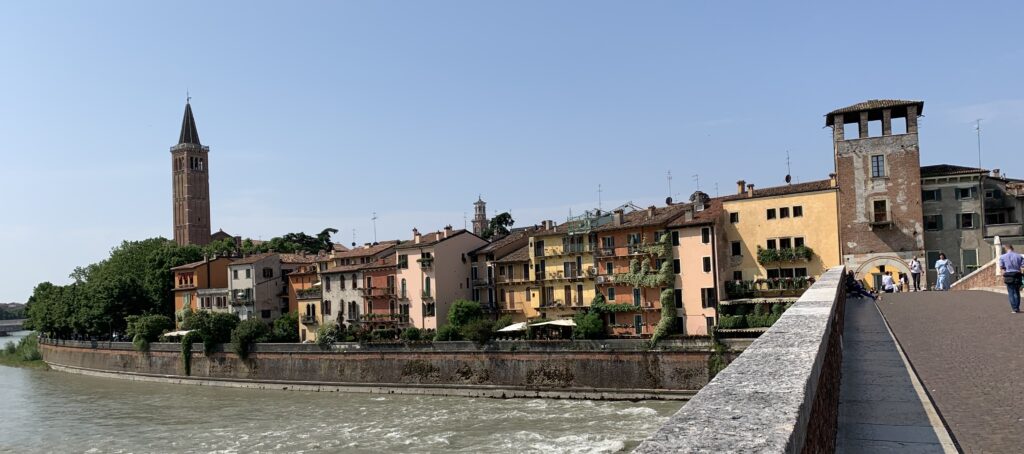
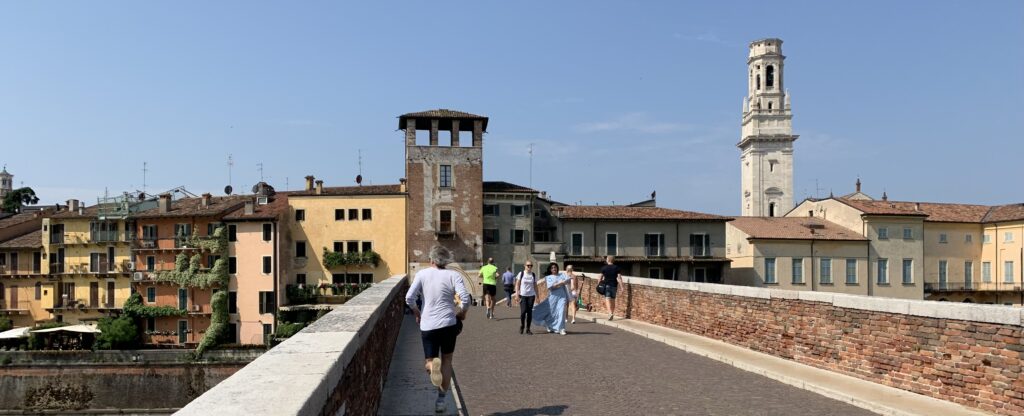

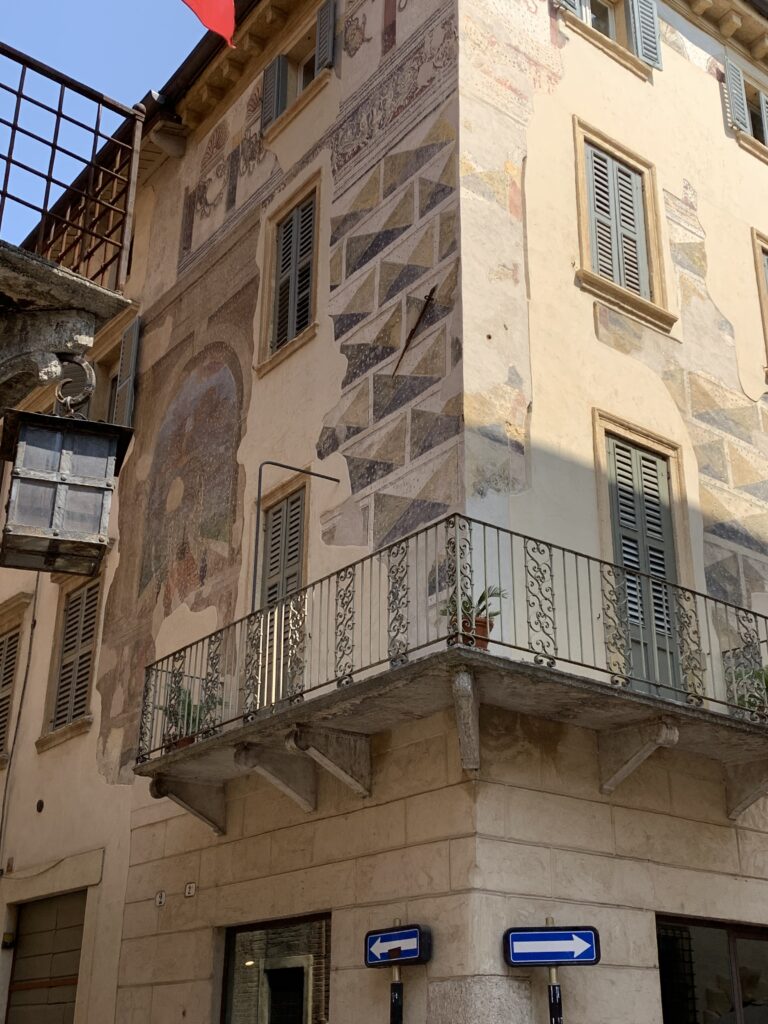


Then we walked by the church Santa Maria Antica with the Scaliger Tombs. There are five Gothic funerary monuments commemorating the Scaliger family who ruled Verona from the 13th to the 14th century. The tombs are enclosed by a wrought iron fence with a stairs motif, the symbol of the family, while the sarcophagi are positioned on the ground or on raised surfaces.
The Della Scala, placed above the portal of the church, was the first of the tombs to be built in the 14th century. It was designed by the same architect of the Church of S. Anastasia; on the lid lies the statue of the deceased. The sculptures, designed by Bonino da Campione, depict holy warriors, characters from the Gospels, Virtues and Apostles, plus the large equestrian statue of Cansignorio.

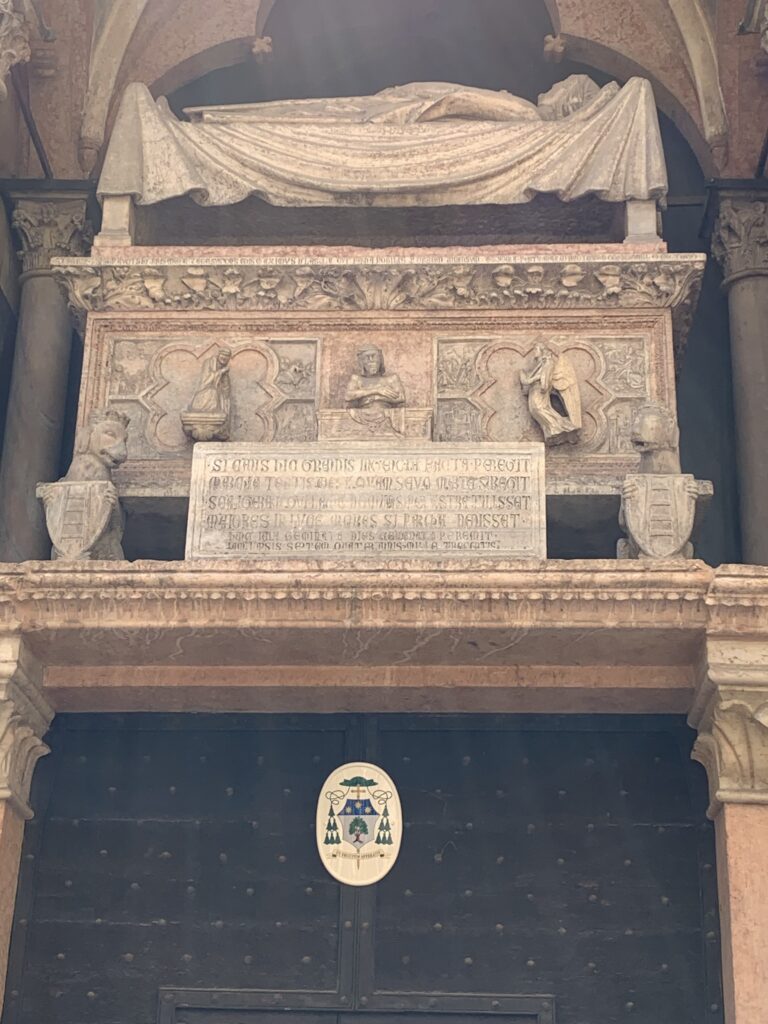
Piazza del Signori (Lords’ Square) is surrounded by buildings and monuments of great historical and architectural importance: the 14th century Palace Vecchio, the Loggia of the Council, built in 1476, and the Uffizi Gallery. The Palazzo dei Tribunali dates back to 1575.
The sixth centennial of the birth of Dante occurred in 1865. To celebrate this, are statue was commissioned. The statue was uncovered on 14 May 1865, made of Carrara marble by Ugo Zannoni. This historic square also has a strong connection with William Shakespear’s Romeo and Juliet, set in Verona. The Town Hall provided the setting where Bartolomeo della Scala banished Romeo and sentenced him to exile in Mantua.
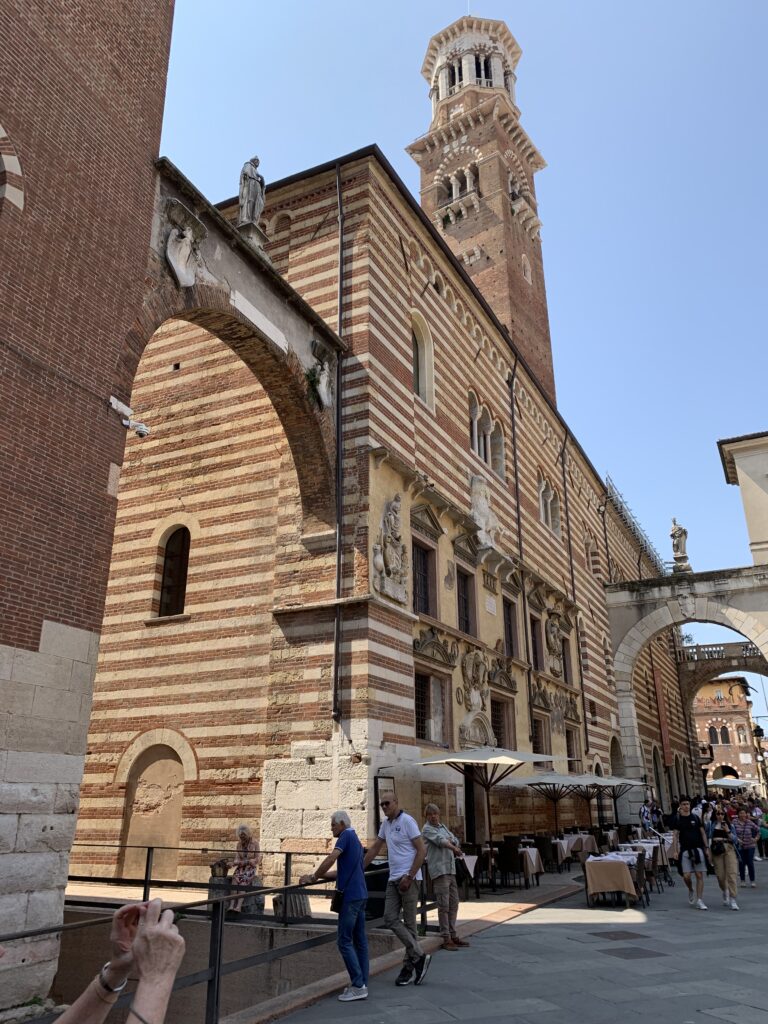

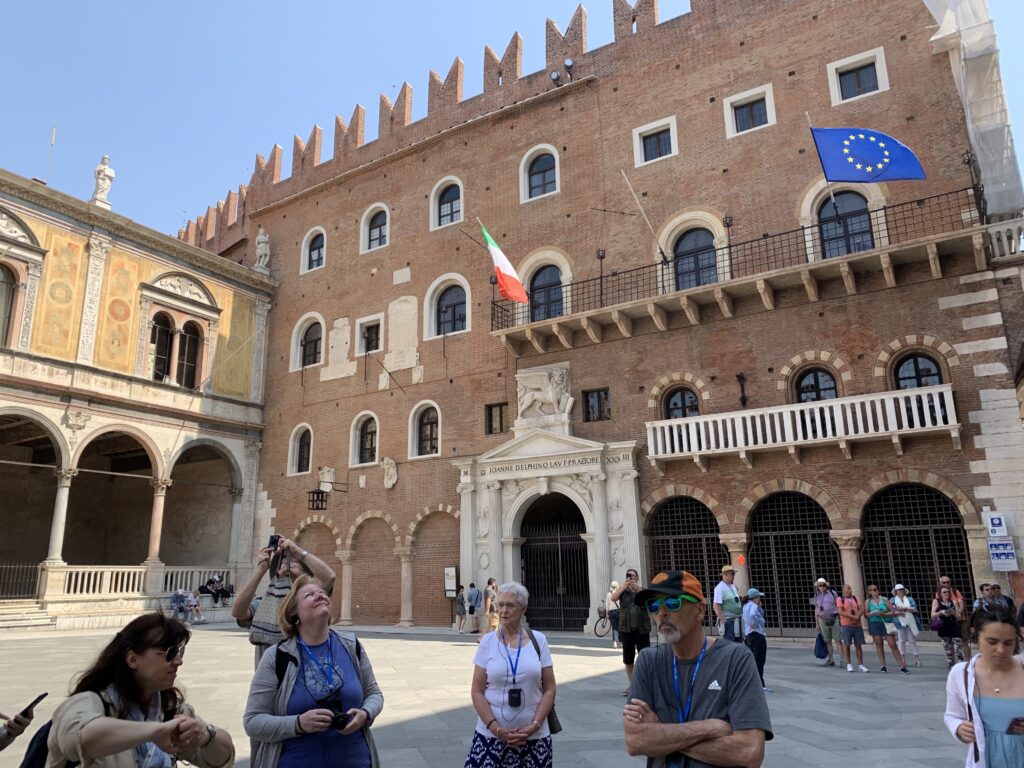
Then we strolled down the street with lots of shops to the Piazza delle Erbe with its cafés. We had lunch at one of them. The piazza also hosts the ancient fountain with the Madonna Verona.

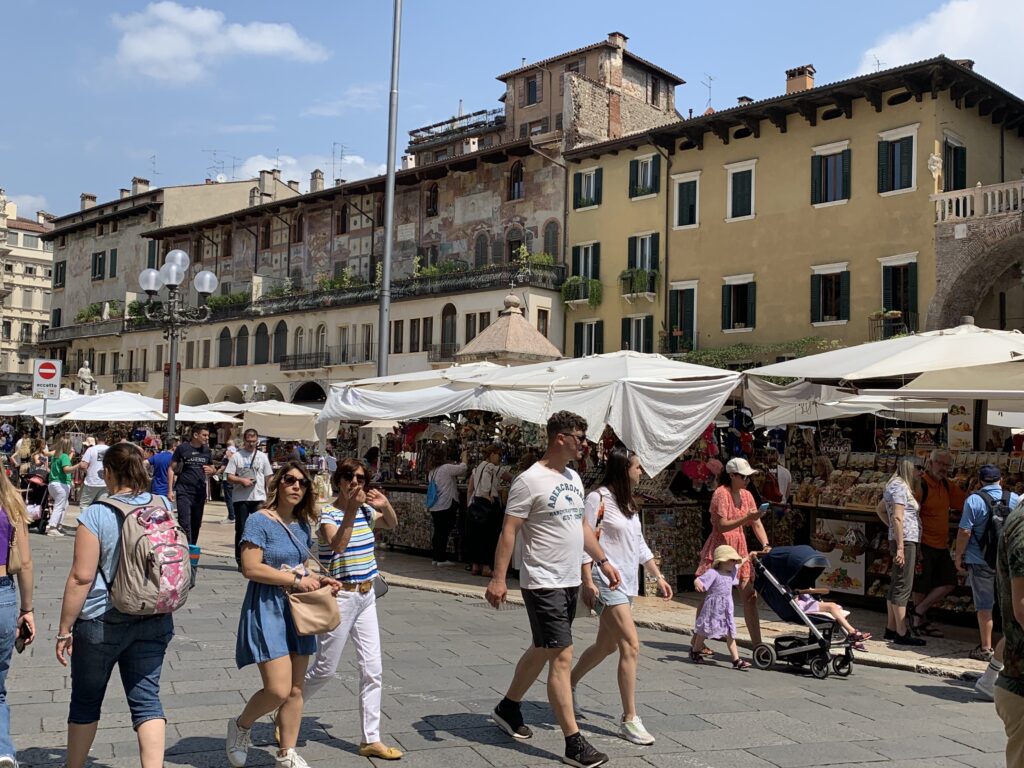

Also on this plaza is the Torre dei Lamberti, an 84 m tower overlooking the old city, built in 1172 CE. It collapsed and was reconstructed in the 1400s. The Lamberti Tower has two bells. The largest bell named Rengo is used to call residents to arms or call a city council. The Marangona bell signals fires, hourly chimes, and work times. The tower stands 275 feet high.
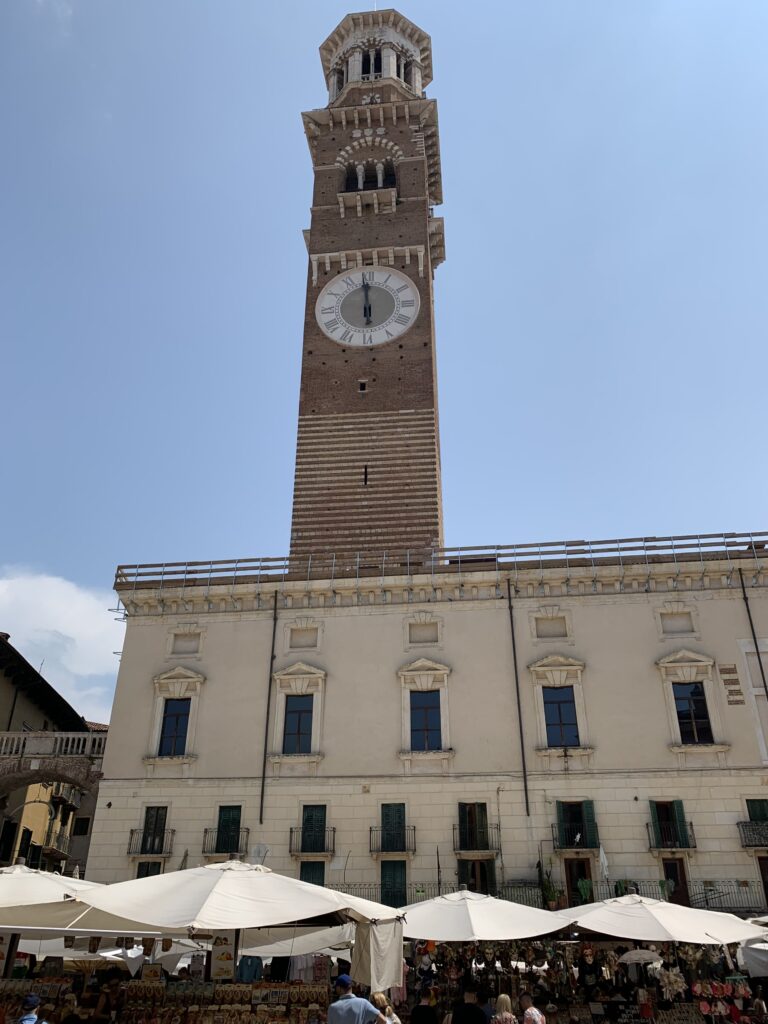


Close to here is the House of Juliet, is a 13th-century structure situated on the remains of a Roman insula building on the Via Capello. It is located near well-known Juliet’s Tomb.The dwelling contains a museum that displays frescoes, paintings, and artwork from the 16th and 17th century. One treat not to be missed is the bronze statue of Juliet. It is said that good luck will come to those who rub the right breast of the sculpture.
Next we saw the Roman Ampitheter, the most renowned Veronese monument, constructed from pink and white stone. Built in 30 CE, this Roman amphitheater can seat up to 25,000 people. The perimeter of the current seating stalls is 1,283 ft., and including the wing it is 1,427 ft.
The amphitheatre is built from three concentric circles. Only one side of the external ring remains. It is commonly referred to as the “Wing”. The tiers of the amphitheatre are all made of Veronese marble. Underneath the tiers there are galleries, cells and passageways, which once served and still serve, in part, for the operation of the amphitheater. Today it is home tot the Verona Opera each summer.
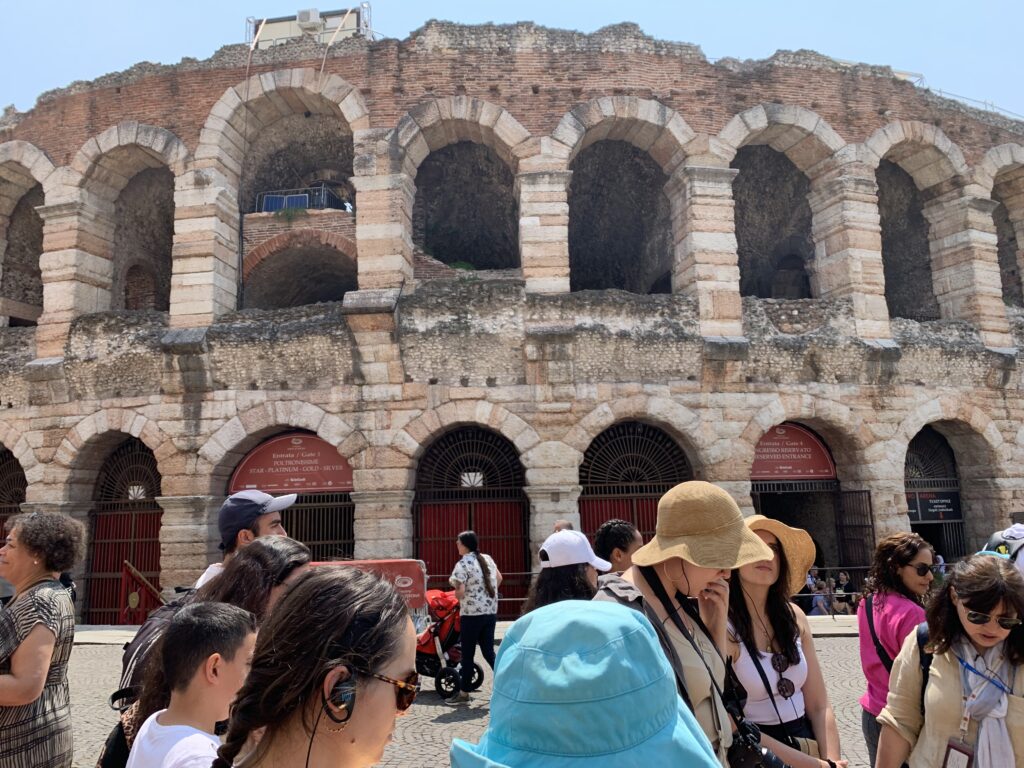
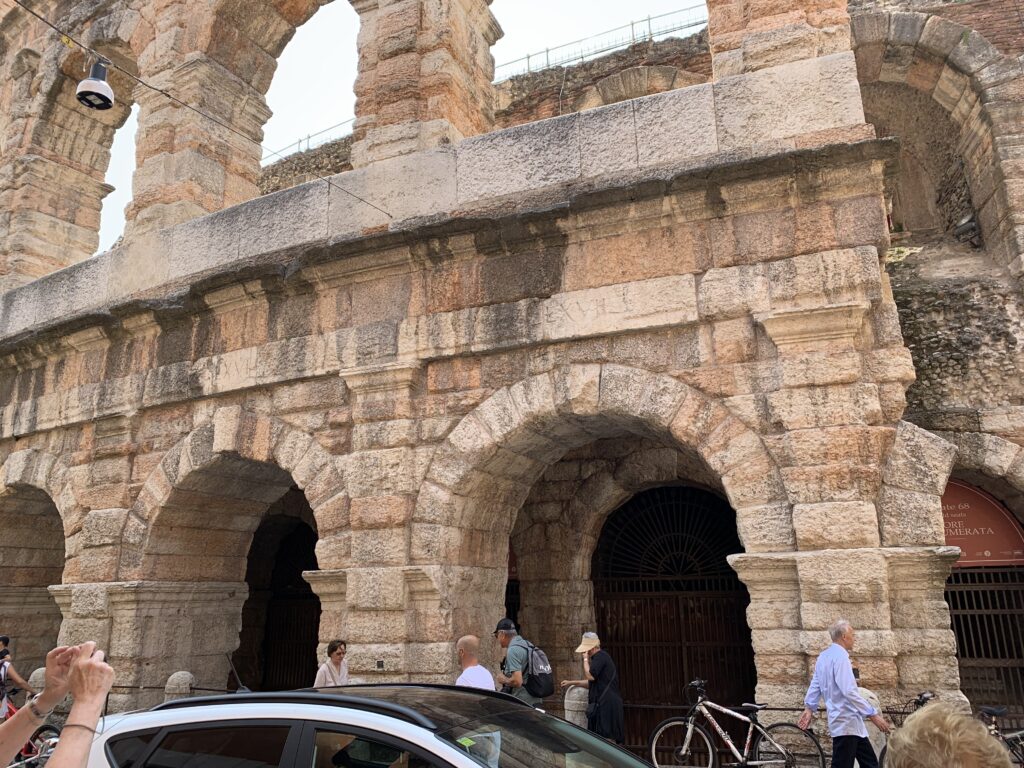

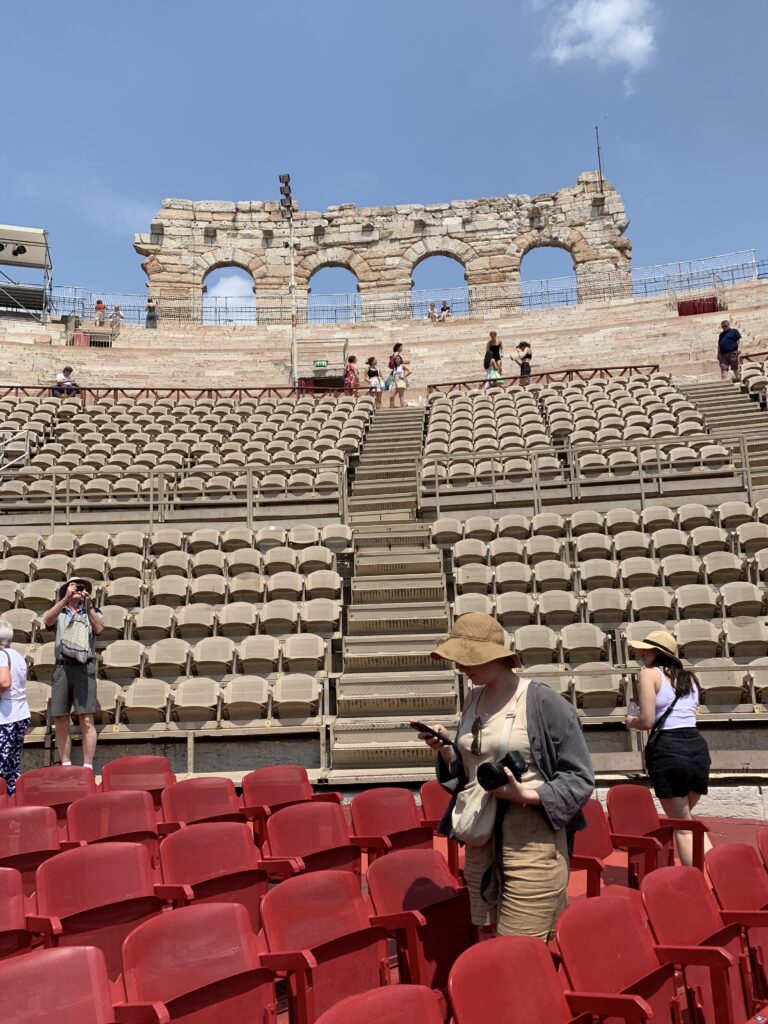
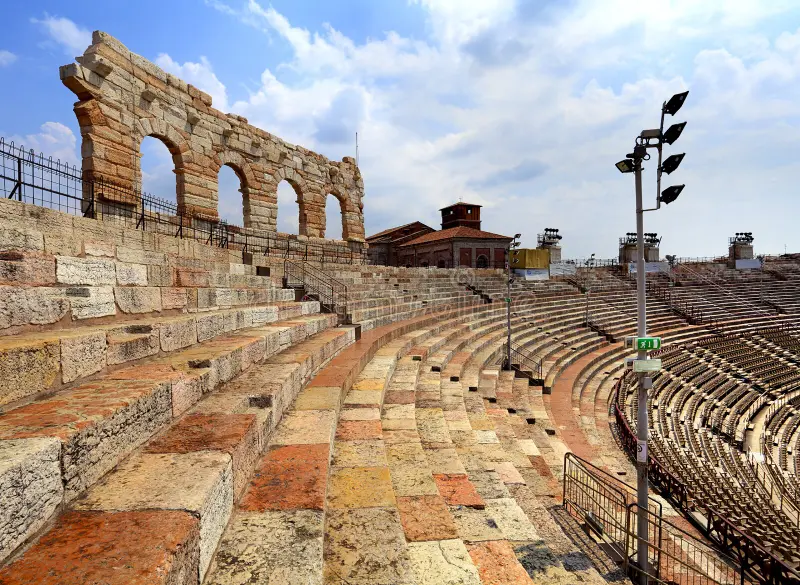
It is located on the Bra Square, the largest city square in Verona. The square is surrounded by many cafes and restaurants. A statue of Victor Emanuel II on horseback, the balcony of the Honori Palace where one of Italy’s founding fathers Garibaldi gave his famous speech “Rome or Death”, and stone carvings of saints are just a few of the sites you will see here.
The Verona Cathedral or Santa Maria Matricolare Cathedral is located in Duomo Square, in the historic center of Verona, surrounded by elegant buildings that seem to have almost been custom-made. It includes the Church of Sant’Elena, the Church of San Giovanni in Fonte, the Cloister of the Canons, the Capitoline Library, and the Bishopric, each of which was built in different periods.
The first Basilica was built in the 4th century, but soon additions were added. The “new” cathedral was started in the 12th century. In the 15th century is was .renovated. It has several famous art works.

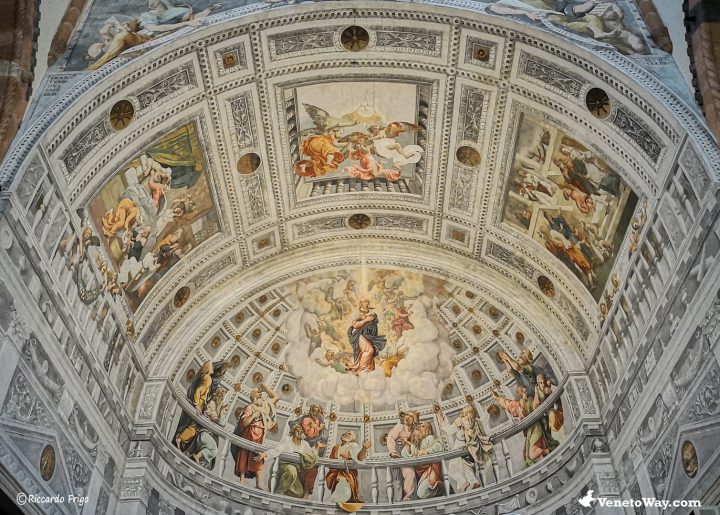
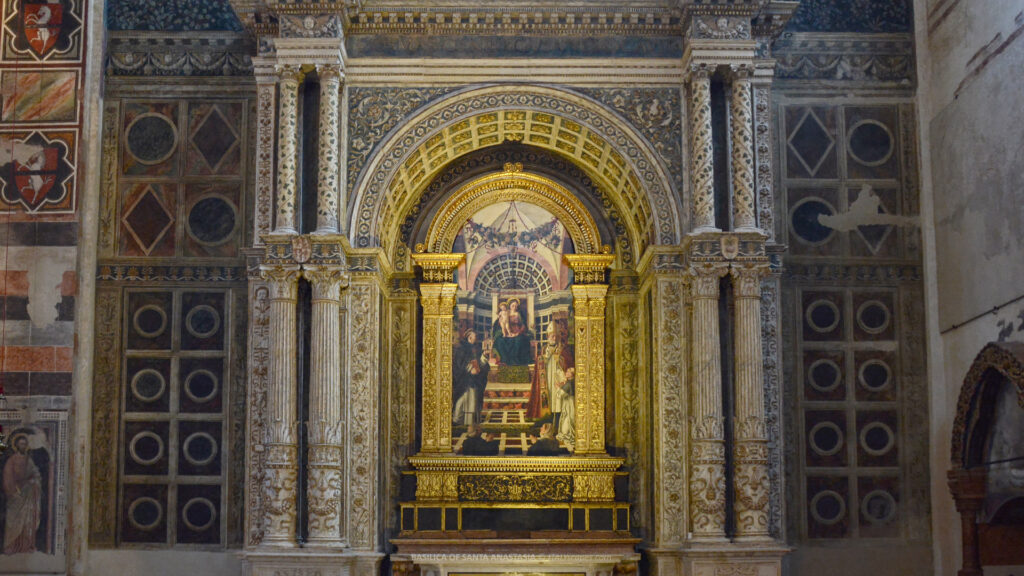
After a long day, it was time head over the bridge to meet our bus. We used the Castelveccio Bridge, from the thirteenth century. It has three arched spans; the overall length of the bridge is 119,90 m. The base of the piles and arched lintels are made of local stone; the rest of the bridge is in brick. The bridge was blown up on the evening of 24 April 1945, by the Germans. In 1951, the new bridge was inaugurated, at the end of a delicate and exemplary reconstruction entirely in conformity with the original.
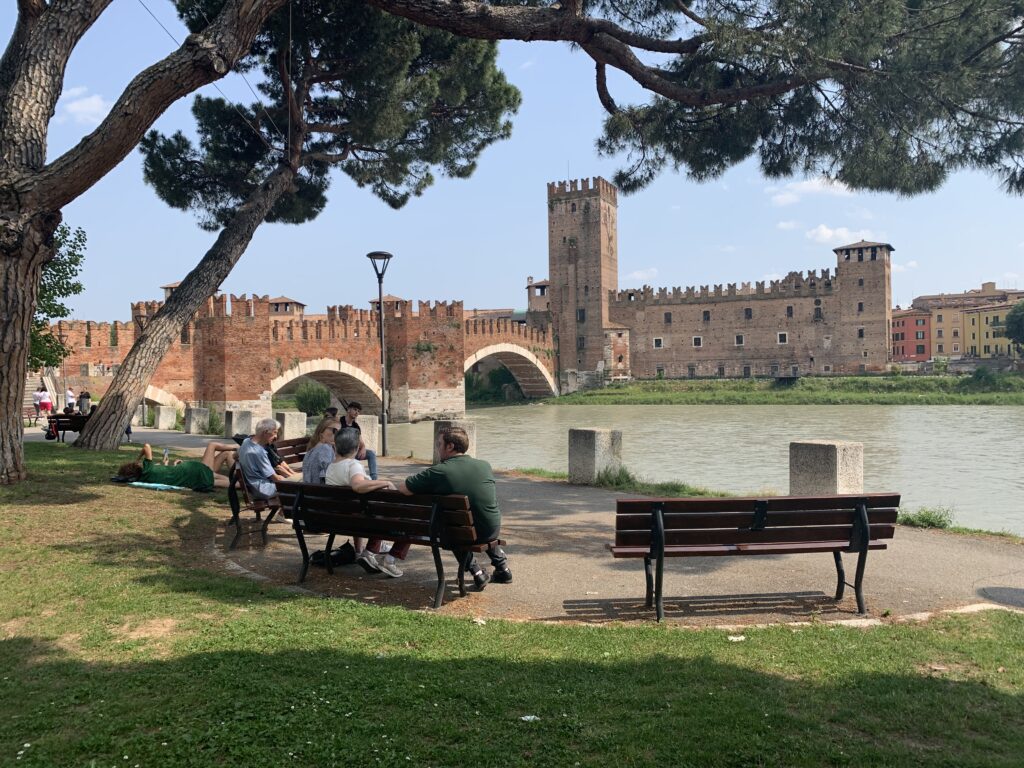

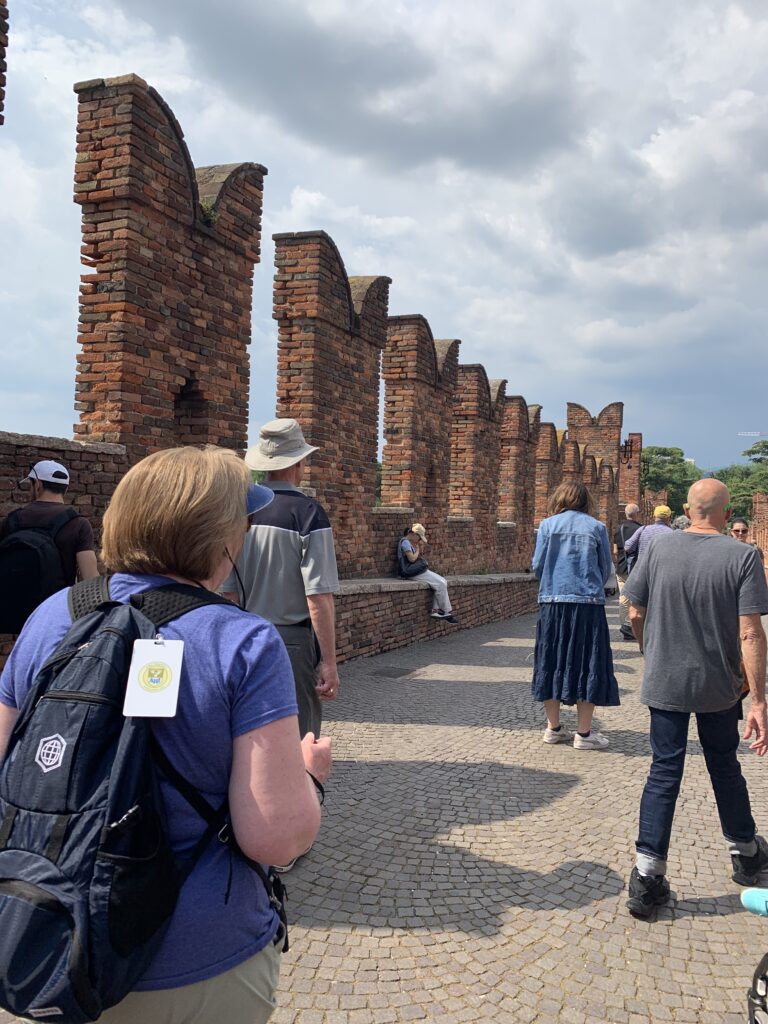
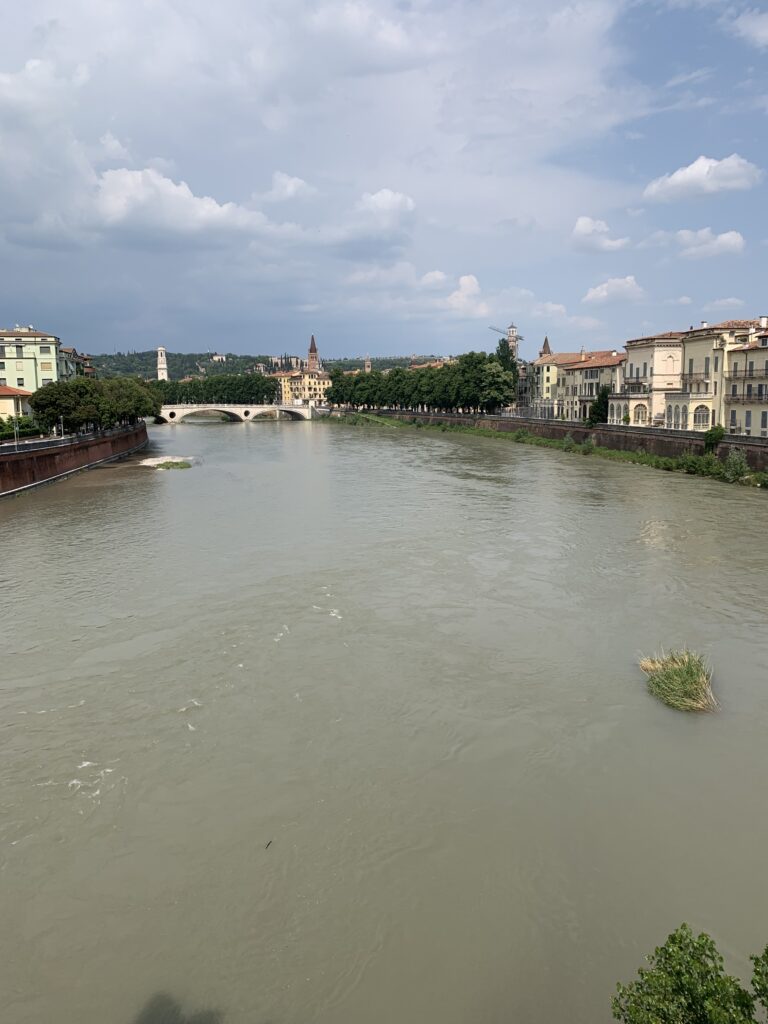
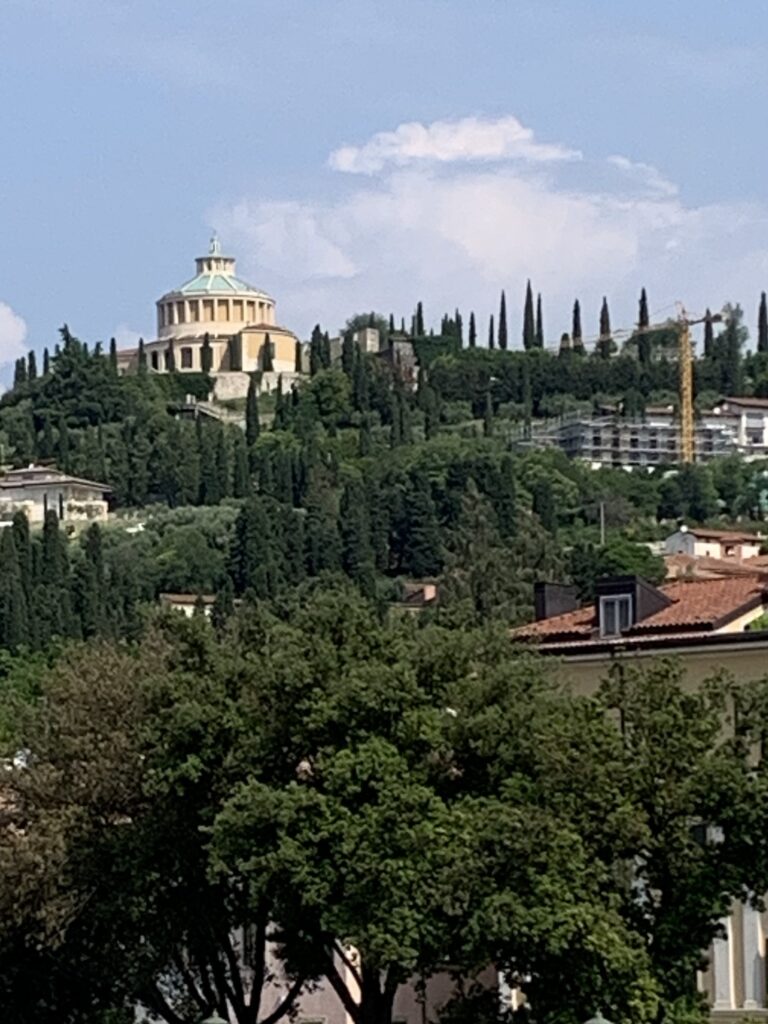
The medieval fortress seen above is set high on a hilltop above Verona. The hilltop location was chosen as the ideal location to protect the city against intruders. The Romans used this hilltop as a defensive position. During Roman times, the hill was known as Monte Gallo, or Rooster Mountain. The Romans also revered this location as a religious site and built a temple and theater here.
The hill was later named Colle San Pietro when a Medieval church dedicated to St. Peter was built on the site. The area was next fortified with battlements typical of medieval fortresses. Between the 14th and 15th centuries, the Castello Visconteo (the Castel of the Viscount) was built.
Leave a Reply